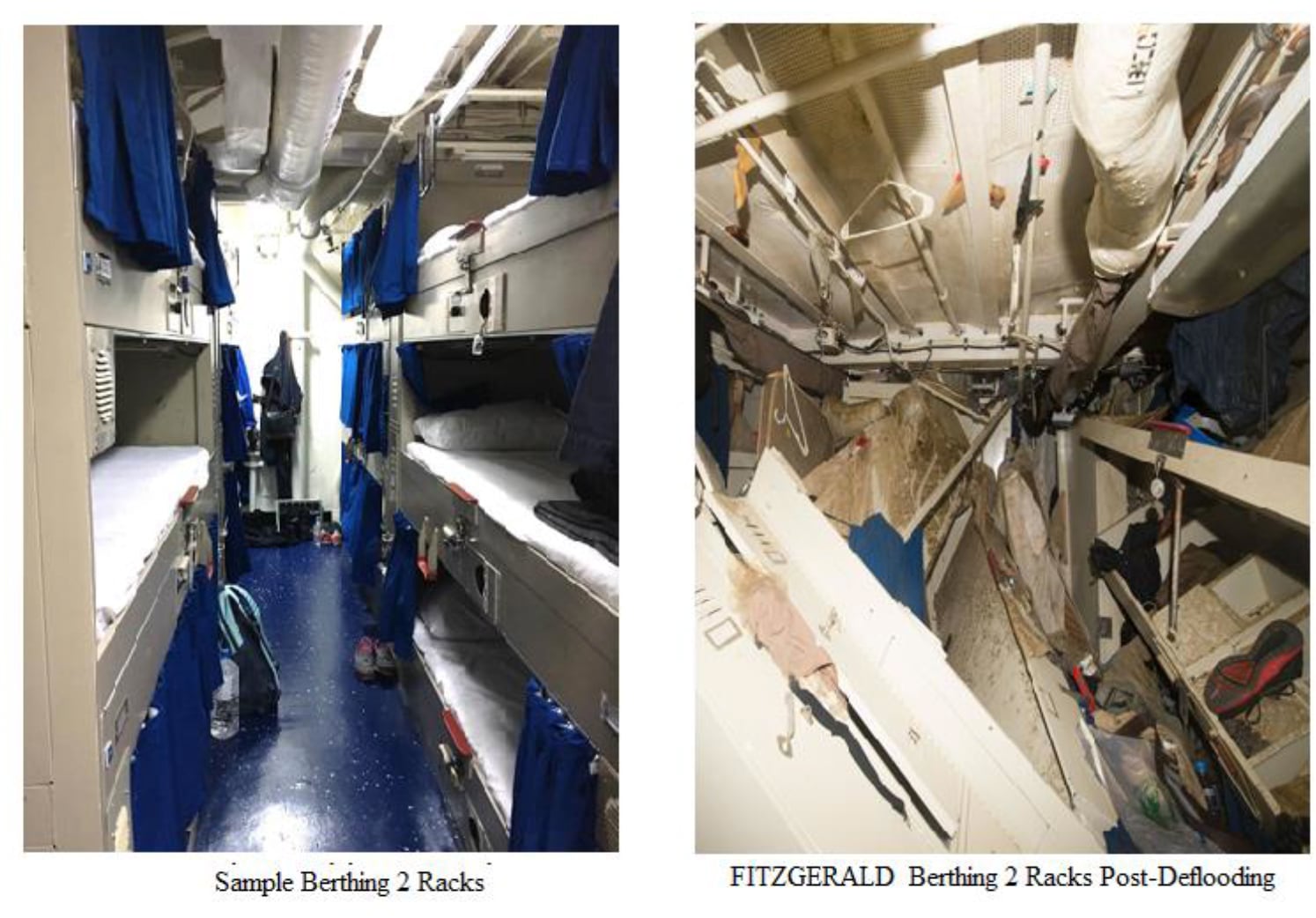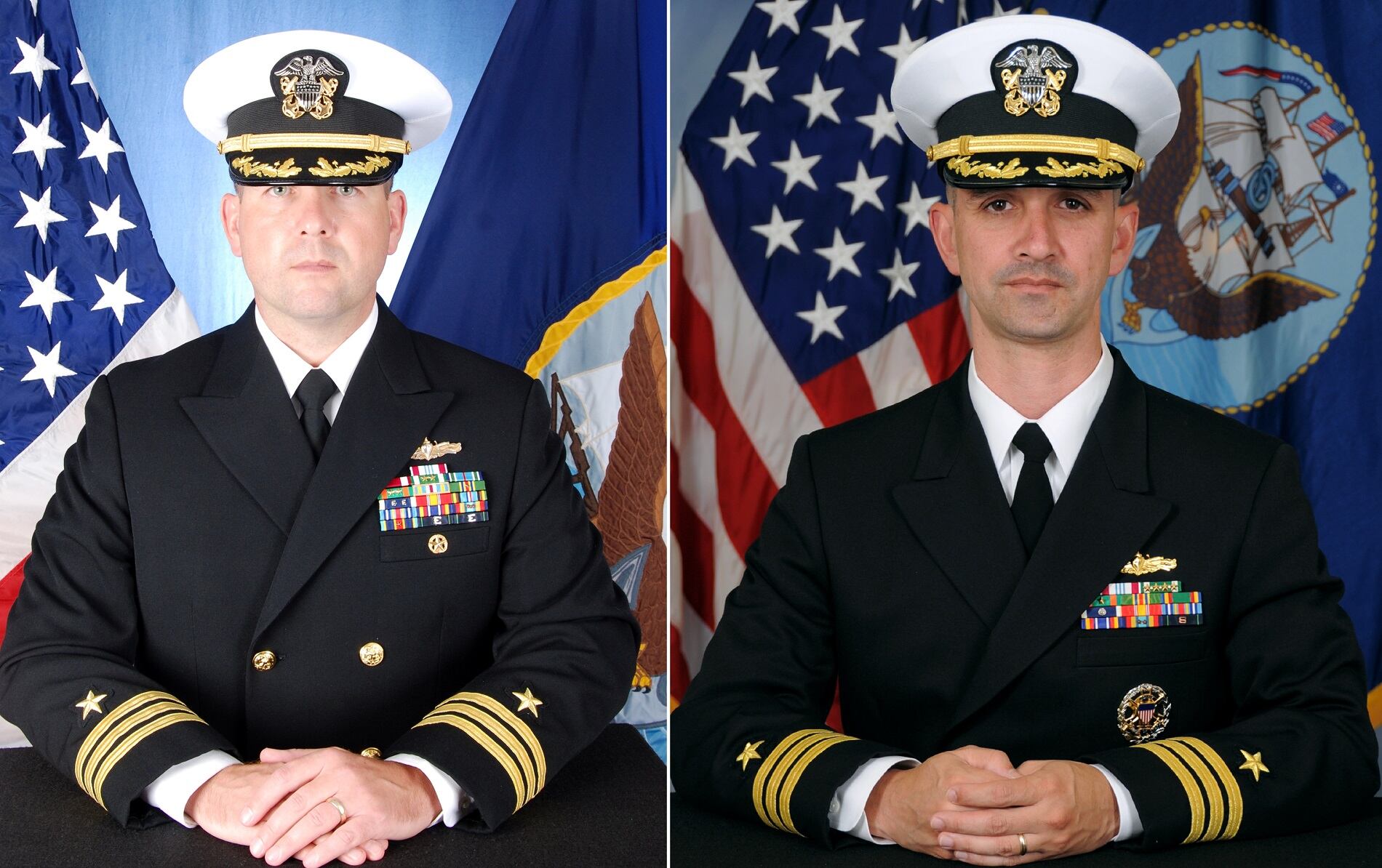More than five months after 17 sailors were crushed and drowned aboard the destroyers Fitzgerald and John S. McCain, the Navy is declining to make public the number and nature of disciplinary actions taken against crew members.
At the same time, uncertainty exists regarding the status of past disciplinary actions. Navy officials confirmed this week that the service is reviewing an unknown number of disciplinary measures that were meted out last year.
That review “is both considering all previous actions and reviewing cases in which no action was taken to ensure fairness, consistency, and appropriate accountability,” Navy spokesman Lt. Cmdr. Daniel Day said in an email.
Day cited that ongoing review as the reason for not providing a current tally of sailors who have received nonjudicial punishment, or NJP, in connection to the collisions.
Officials also declined to say which prior disciplinary actions are being reconsidered, and why.
Since those historic mishaps, Navy leadership has pushed accountability as the order of the day. Commanders at all levels of the surface fleet have been relieved of command. The Navy announced this month that it will seek criminal charges against five officers and one chief.
But the number of sailors who have faced administrative discipline remains unclear.
This official silence represents an about-face from the initial response last year. On Aug. 17, the Navy’s second in command, Adm. Bill Moran, announced that the Navy planned to take up to a dozen Fitz sailors to NJP.
But the Navy’s entire process for dealing with the Fitzgerald’s aftermath would be upended a few days later, when the McCain suffered a similar collision on Aug. 21.
RELATED

The sea service created a so-called “Consolidated Disposition Authority,” or CDA, in November, roughly five months after the June 17 Fitz collision and three months after the McCain catastrophe.
“The CDA was appointed to ensure consistency across the class of affected cases, including reviewing all previous accountability actions from a fresh, independent perspective,” Day said.
Whatever the reason, failing to release even a basic number of sailors who have received NJP “speaks to a complete lack of transparency,” said Capt. Michael Junge, a surface warfare officer and Naval War College professor. He noted that he spoke for himself and not the Navy.
Like a court-martial, NJP charges troops with violations of the Uniform Code of Military Justice and can end a service members military career.
Yet unlike courts-martial, NJP proceedings occur largely out of the public eye, and critics say the process offers less rights for the accused.
“I fear for those folks,” Junge said. “They have virtually no rights.”
Moran said on Aug. 17 the Fitz sailors facing NJP would include Cmdr. Bryce Benson, the captain of the ship at the time of the collision off Japan, where seven sailors died.
Last week, the Navy announced it would pursue courts-martial on charges of negligent homicide, dereliction of duty and hazarding a vessel against Benson and three unidentified junior officers.
Cmdr. Alfredo Sanchez, who led the McCain at the time of its fatal collision, faces the same charges.
RELATED

That Navy’s public statement added that four Fitz sailors and four McCain sailors would also face NJP in connection to the collisions.
Yet Navy officials declined to say whether any additional sailors have faced NJP or will in the future.
“Information regarding further actions, if warranted, will be discussed at the appropriate time,” the Navy said in the statement.
Critics say the Navy’s silence on Fitz and McCain is the latest example of longstanding problems with the Navy’s use of NJP, a disciplinary mechanism they say is overused and opaque, while offering far less rights to the accused than a court-martial.
The rights of the accused during NJP versus a court-martial are “worlds apart,” according to Patrick McLain, a former Marine Corps judge now in private practice.
Because NJP is administrative, the accused does not have the right to an attorney, McLain said.
The standards for proving guilt in an NJP proceeding are lower than for a court-martial, he said, and NJP involves less-stringent evidence standards.
A court-martial provides “greater rights, constitutional rights and rights provided under the Uniform Code of Military Justice,” McLain said.
The courts-martial process is typically open to the public, including the Article 32 proceeding held beforehand to decide whether the evidence is sufficient to support the charges.
But NJP proceedings are not open to the public and the Navy generally does not publicize the results.
“A case that doesn’t go to court-martial…is a case the public may never learn much about,” said Eugene R. Fidell, an attorney who specializes in military law.
NJPs are supposed to be used for minor infractions, he said, and the law offers the services latitude regarding what they publicize about such cases.
The two commanders and others now facing a possible court-martial in connection to the Fitz and McCain disasters are almost better off than their shipmates undergoing NJP, Junge said, because the Navy’s efforts to court-martial them will be public.
“You go to NJP and your reputation is lost because the Navy won’t release any information,” Junge said. “The standard of proof is ridiculously low.”
Troops generally have the option to ask for a court-martial instead of NJP when accused of UCMJ violations.
But Fitz and McCain sailors hit with NJP are likely subject to the so-called “vessel exception,” a uniquely Navy regulation that prohibits defendants assigned to a ship from rejecting NJP and opting to face their charges at a court-martial instead.
Day, the Navy spokesman, declined to comment about whether the vessel exception was invoked in any disciplinary matters related to the disasters.
RELATED

“At this time, we cannot comment on particular cases, including whether the vessel exception would apply to any of those individuals who might face nonjudicial punishment,” he said.
Fidell called the vessel exception “an unfortunate practice” in the Navy that has in the past been used on sailors who are still assigned to a ship only on paper.
“The Navy continues to take a far more expansive view of the vessel exception than it ought to,” Fidell said.
McLain, the former Marine Corps judge, said details on prior Fitz and McCain disciplinary actions will likely emerge when the government makes its case for why the destroyers’ former skippers should be court-martialed.
He also said that attempting to try them on negligent homicide was a “pretty wild” route to take.
“To talk about causation of death for whatever negligence these skippers committed is a real stretch,” McLain said. “As a military judge, I’ve seen where the government reaches and loses a case.”
Geoff is the managing editor of Military Times, but he still loves writing stories. He covered Iraq and Afghanistan extensively and was a reporter at the Chicago Tribune. He welcomes any and all kinds of tips at geoffz@militarytimes.com.





